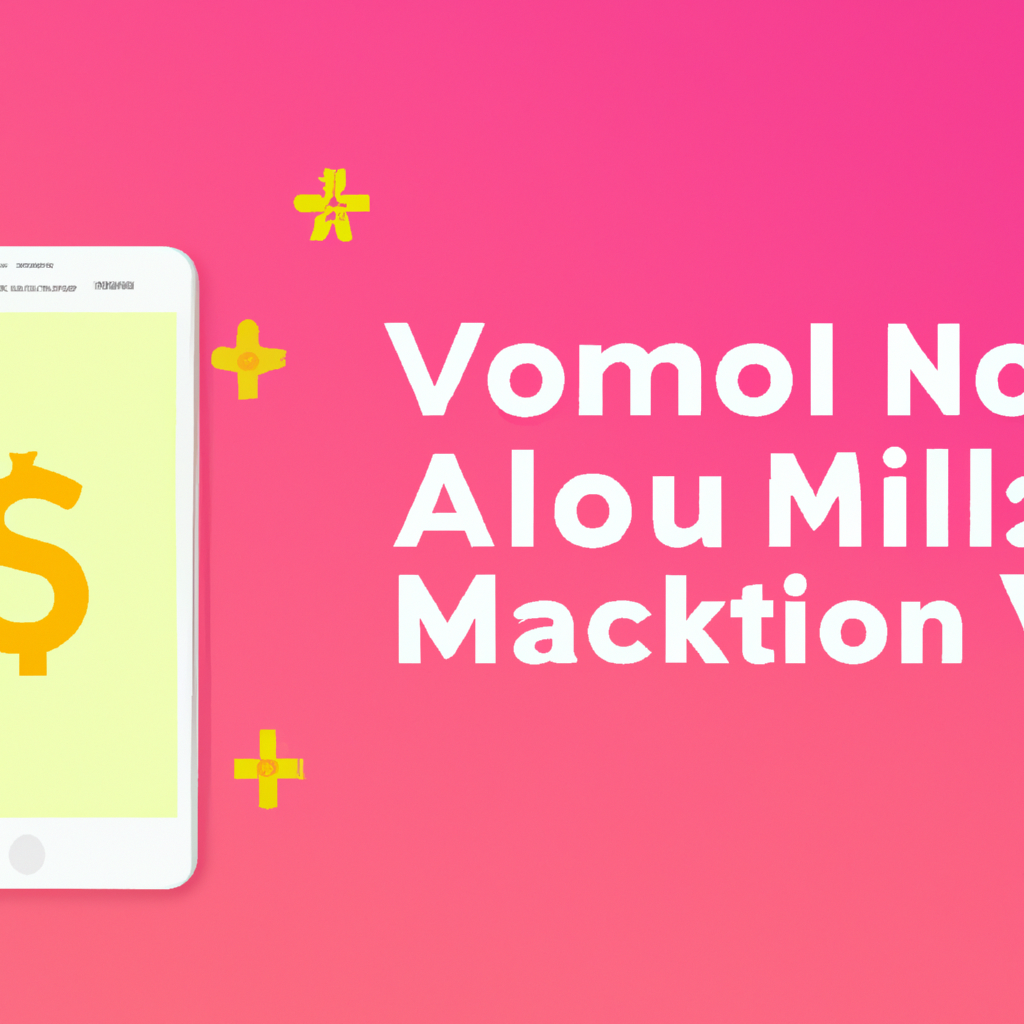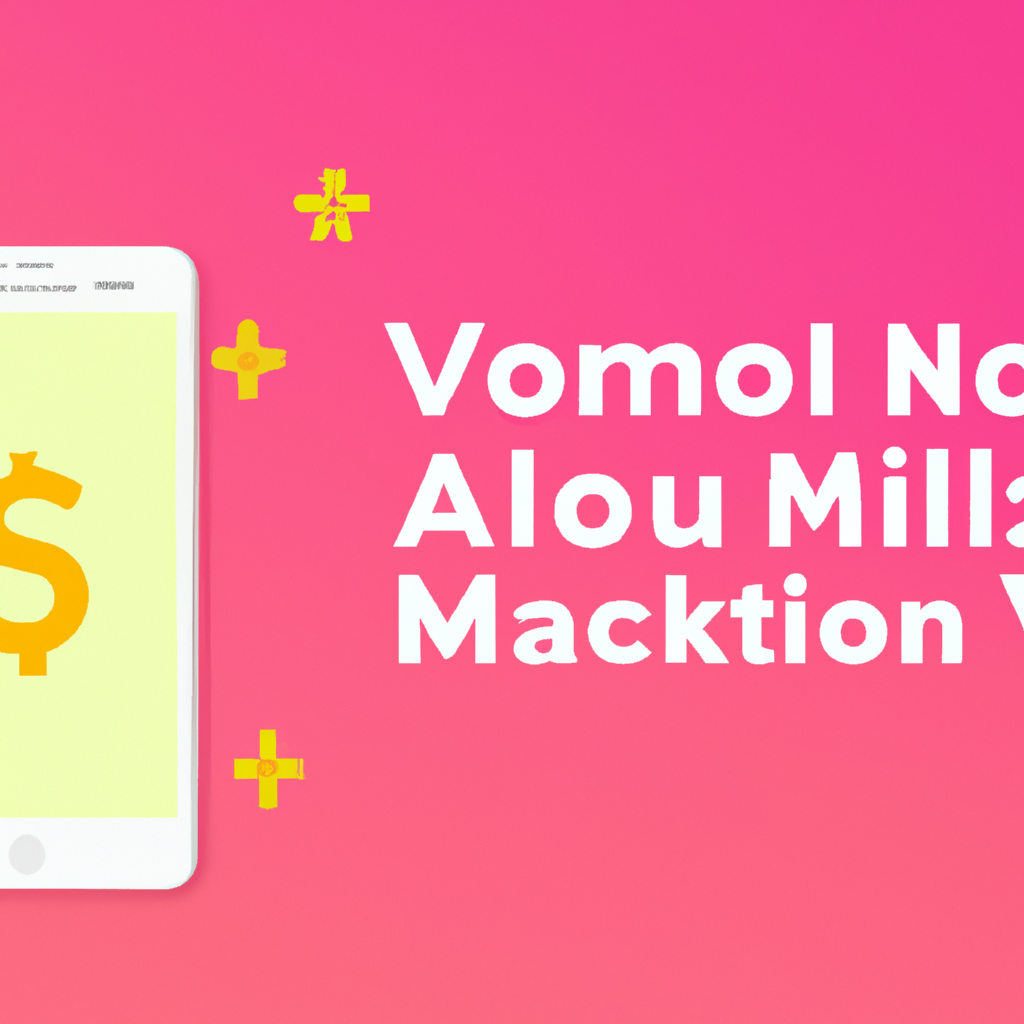So you’ve developed a mobile app and it’s gained a pretty impressive user base of 1 million people. Now comes the million-dollar question: how much is your app actually worth? With the ever-growing app market and varying factors that determine the value of an app, it can be a tricky question to answer. In this article, we’ll explore the different aspects that contribute to the value of an app with 1 million users and shed some light on the potential worth of your creation.

The Importance of User Base in App Valuation
When it comes to valuing apps, the user base is a critical factor that significantly impacts the overall value. The number of users an app has can provide valuable insights into the app’s popularity, reach, and potential for monetization. In this article, we will delve into why the user base matters, the various factors that determine app value, different methods for calculating app value, the role of monetization strategy, market trends and industry comparisons, and investor perspectives on app valuation. We will also explore other factors that affect app value, methods for estimating app value, challenges in app valuation, and provide case studies of high-value apps with 1 million users.
Why User Base Matters
The user base of an app is the foundation of its value. The more users an app has, the greater its potential for generating revenue, attracting advertisers, and retaining users. A large user base indicates that the app has successfully captivated and engaged a significant number of people, making it an attractive proposition for investors and potential buyers. Additionally, a substantial user base provides a solid foundation for future growth opportunities, as it allows for the implementation of effective monetization strategies and opens doors to various partnership opportunities.
Factors that Determine App Value
While the user base is a critical factor, several other factors come into play when determining the value of an app. These factors include revenue multiples, user acquisition cost, engagement metrics, and active user value. Let’s explore each of these factors in more detail.
Revenue Multiples
Revenue multiples refer to the ratio of the app’s valuation to its revenue. It is a crucial factor in app valuation as it helps determine the app’s potential for generating consistent revenue over time. The higher the revenue multiples, the higher the app’s value. Factors influencing revenue multiples include the app’s revenue growth rate, profit margins, and industry norms.
User Acquisition Cost
User acquisition cost (UAC) measures the amount an app spends on acquiring each user. UAC is an essential factor in determining app value, as it directly impacts the app’s profitability and long-term sustainability. Lower UAC implies a more cost-effective acquisition strategy and a higher value for the app.
Engagement Metrics
Engagement metrics encompass various indicators such as session duration, frequency of usage, and user interaction within the app. These metrics measure how actively users are engaging with the app and can provide insights into the app’s stickiness and user loyalty. Apps with higher engagement metrics are generally more valuable as they attract and retain a more dedicated user base.
Active User Value
Active user value (AUV) refers to the amount of value a single active user generates for the app. AUV is calculated by dividing the app’s revenue by its active user count. A higher AUV indicates that each user generates more revenue for the app, making it more valuable. Factors influencing AUV include monetization strategies, average revenue per user (ARPU), and user retention rates.
Different Ways to Calculate App Value
Calculating app value is not a one-size-fits-all approach, and there are various methods available depending on the specific factors that are being considered. Let’s explore some of the common ways to calculate app value.
1. Revenue Multiples
As mentioned earlier, revenue multiples can be used to calculate app value by considering the app’s revenue and applying a multiple to it. The multiple can be determined based on industry standards, comparable apps, or projections of future revenue growth.
2. User Acquisition Cost
Calculating app value based on user acquisition cost involves determining the number of users acquired and the cost associated with acquiring each user. The total acquisition cost can then be factored into the app’s overall value.
3. Engagement Metrics
An app’s value can also be calculated based on its engagement metrics, such as session duration and frequency of usage. Apps with higher engagement metrics can be deemed more valuable due to the higher likelihood of user retention and revenue generation.
4. Active User Value
Calculating app value based on active user value involves determining the average revenue generated per active user and multiplying it by the number of active users. This method provides insights into the app’s revenue potential and can be used to estimate its overall value.

The Role of Monetization Strategy
A robust monetization strategy plays a crucial role in determining app value. Monetization involves generating revenue from an app through various channels and methods. Let’s explore some key aspects of monetization strategy that impact app value.
1. Revenue Streams
A well-diversified range of revenue streams can significantly enhance app value. These revenue streams can include in-app purchases, subscriptions, advertisements, sponsored content, and partnerships. Apps with multiple revenue streams have a higher potential for generating stable and sustainable revenue, making them more valuable.
2. Average Revenue per User (ARPU)
ARPU is a critical metric used in app valuation. It measures the average revenue generated by each user. By increasing ARPU through various monetization strategies, such as offering premium features or subscriptions, the overall value of the app can be significantly enhanced.
3. Monetization Potential
The potential for monetization is another crucial aspect of app valuation. Evaluating the app’s ability to generate revenue in the future by exploring untapped markets, identifying new revenue streams, or expanding existing ones can enhance the app’s value. Investors often assess the scalability and growth potential of an app’s monetization strategy to determine its value.
Market Trends and Industry Comparisons
Analyzing market trends and comparing an app with its competitors and industry benchmarks can provide valuable insights into its value. Let’s explore three aspects that can impact app valuation in terms of market trends and industry comparisons.
1. Benchmarking against Similar Apps
Benchmarking an app against similar apps within its industry helps determine its relative value. By analyzing metrics such as user base, revenue, engagement, and user acquisition cost, app valuation can be compared to other similar apps. This provides a benchmark for assessing the app’s performance and value in relation to its peers.
2. Market Share and Competition
Market share and competition play a crucial role in app valuation. Apps with a higher market share are generally more valuable as they have a larger customer base, higher revenue potential, and a competitive advantage over their rivals. Understanding the competitive landscape and how the app ranks within it is essential when assessing app value.
3. Industry Growth Potential
Analyzing the growth potential of the industry in which the app operates is essential for determining app value. Industries with significant growth potential can attract more investors and buyers, leading to higher valuations for apps within those industries. Taking into account industry trends, market size, and future projections can help assess the app’s value in the context of industry growth.
Investor Perspectives on App Valuation
Investors play a vital role in app valuation. Their perspectives and assessments can heavily influence the perceived value of an app. Let’s explore three key factors investors consider when valuing apps.
1. Assessing Market Opportunities
Investors evaluate the market opportunities associated with an app when determining its value. They assess factors such as the target market size, growth potential, competitive landscape, and the app’s unique value proposition. Understanding market opportunities helps investors gauge the app’s potential for success and, subsequently, its value.
2. Evaluating History and Future Projections
Investors carefully evaluate an app’s history and future projections to determine its value. They analyze the app’s revenue growth, user acquisition patterns, engagement metrics, and performance over time. This assessment helps investors gain insights into how the app has performed and its potential for future success.
3. Risk Assessment and Management
Investors closely evaluate the risks associated with an app when determining its value. Factors such as competition, market saturation, regulatory risks, and technical risks are analyzed to assess the potential impact on the app’s value. Investors aim to understand and mitigate these risks to safeguard their investment and maximize app value.
Other Factors Affecting App Value
In addition to the factors mentioned above, several other factors can significantly impact app value. Let’s explore three additional factors that need to be considered when valuing an app.
1. Intellectual Property and Patents
Apps that possess unique intellectual property or patented technologies often have higher value due to their competitive advantage and potential for future growth. Intellectual property and patents protect the app’s innovation and can provide barriers to entry for competitors.
2. Brand Value and Recognition
The brand value and recognition of an app can greatly impact its overall value. A strong brand is associated with user trust, loyalty, and recognition, which can lead to higher user acquisition and retention rates. Apps with a recognizable and trusted brand often command higher valuations.
3. App Store Rankings and Reviews
App store rankings and reviews can heavily influence app value. A high-ranking app with positive reviews indicates user satisfaction and popularity, making it more valuable. A strong presence in app store rankings can lead to increased visibility, user acquisition, and revenue generation.
Methods for Estimating App Value
Several methods can be employed to estimate app value. Let’s explore three common approaches used in the industry.
1. Appraisals and Valuation Agencies
Appraisals and valuation agencies specialize in assessing the value of apps. These agencies use a combination of financial analysis, industry benchmarks, market trends, and other relevant factors to estimate the value of an app. Their expertise and experience in the field make them valuable resources for determining app value.
2. Comparable App Sales and Acquisitions
Analyzing the sales and acquisitions of comparable apps can provide insights into app value. By studying the sales prices and valuations of similar apps, investors can gauge the value of their own app. This method relies on the assumption that comparable apps share similar characteristics and revenue potential.
3. Financial Modeling and Forecasting
Financial modeling and forecasting involve analyzing historical data and making future projections based on various assumptions. Through financial modeling, investors can estimate the app’s future revenue, expenses, and overall value. This method requires a deep understanding of the app’s revenue streams, growth potential, and industry dynamics.
Challenges in App Valuation
Valuing apps can present several challenges, and it is essential to consider these challenges when assessing app value. Let’s explore three common challenges in app valuation.
1. Defining Worth beyond User Base
While the user base is a critical factor, it is not the sole determinant of an app’s worth. The value of an app extends beyond its user base and includes factors such as revenue potential, engagement metrics, monetization strategies, and market opportunities. Assessing app value requires a comprehensive evaluation of all these factors to achieve an accurate valuation.
2. Hidden Costs and Liabilities
Hidden costs and liabilities can significantly impact app value. Expenses such as customer acquisition, maintenance, server costs, and technical support should be carefully considered when valuing an app. Additionally, legal and regulatory liabilities, such as compliance with data privacy laws, can also impact the app’s value.
3. App Lifespan and Long-term Value
The lifespan and long-term value of an app are important considerations in app valuation. Apps that have a short lifespan or rely on short-term trends may have limited long-term value. Investors need to carefully assess an app’s scalability, ability to adapt to changing trends, and potential for sustained success to determine its long-term value.
Case Studies: High-Value Apps with 1 Million Users
To further explore the impact of a large user base on app value, let’s examine three case studies of high-value apps with 1 million users.
1. Instagram
Instagram, the popular photo-sharing app, reached 1 million users within just two months of its launch. Its rapid user growth and high user engagement made it a highly valuable app. In 2012, Facebook acquired Instagram for $1 billion, valuing each user at approximately $33. Instagram’s large user base, strong brand value, and potential for future monetization played a significant role in its high valuation.
2. WhatsApp
WhatsApp, a messaging app, also reached 1 million users within a short period. Its simplicity, cross-platform compatibility, and low-cost messaging capabilities attracted a large user base. In 2014, Facebook acquired WhatsApp for $19 billion, valuing each user at approximately $42. WhatsApp’s extensive user base, international reach, and potential for growth in emerging markets contributed to its high valuation.
3. Snapchat
Snapchat, a multimedia messaging app, experienced rapid growth and reached 1 million users in less than a year. Its unique disappearing messaging feature and popularity among younger demographics made it a highly sought-after app. In 2013, Snapchat rejected a $3 billion acquisition offer from Facebook, indicating the perceived value of the app and its potential for further growth.
These case studies highlight the significant impact a large user base can have on app valuation, attracting substantial investments and high valuations.
Conclusion
The user base is a crucial factor in app valuation, reflecting the app’s popularity, potential for monetization, and overall value. Other factors such as revenue multiples, user acquisition cost, engagement metrics, and active user value also play important roles in determining app value. A robust monetization strategy, market trends and industry comparisons, investor perspectives, and other factors like intellectual property and brand recognition further impact app value. Various methods, such as revenue multiples, user acquisition cost, engagement metrics, and active user value, can be employed to calculate app value. However, challenges exist in accurately valuing apps, such as defining worth beyond the user base, accounting for hidden costs and liabilities, and assessing the app’s lifespan and long-term value. Case studies of high-value apps with 1 million users, such as Instagram, WhatsApp, and Snapchat, demonstrate the significant impact a large user base can have on app value. As the app industry continues to evolve, understanding app valuation becomes increasingly important for developers, investors, and buyers in optimizing app value and making informed decisions.
